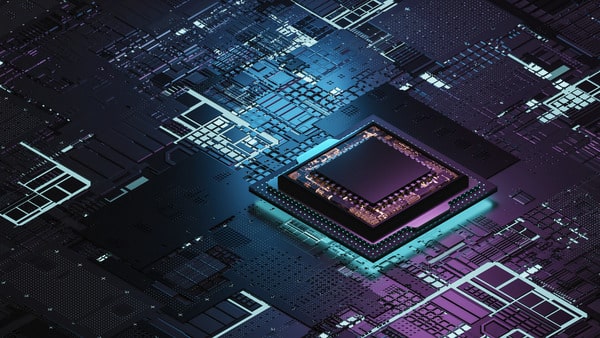Forget about the metaverse. The “next big thing” in the world of technology is Generative AI, a type of artificial intelligence that is capable of producing original content from scratch. Someday—hopefully not too soon—generative AI will be able to write articles like this, thus putting me out of a job.
And one of the most important Big Tech companies is now making a huge investment in this area…

Venture capital investment into generative AI has increased 425% since 2020 to $2.1 billion in 2022, according to PitchBook. That is about as much as the amount invested in all of the previous five years combined!
The global market for AI-augmented content solutions likely hit $2.3 billion in 2022, and research from PitchBook predicts it will grow an overall 17% through 2025. But the group added that: “…the technology might not generate high revenues in the short term, as professions resist AI solutions and the technology still has to mature.”
One of the leading companies in this field is OpenAI, which was founded in 2015. Its ChatGPT made its public debut in December 2022. ChatGPT, which can converse with users, surpassed 1 million users in just five days.
So, it is notable that Microsoft (MSFT) is considering a $10 billion investment into OpenAI that would value the entire company at $29 billion. Let’s consider the implications of this possible deal.
Why Microsoft Is Interested in OpenAI
If Microsoft does go through with this investment, it will be doubling down (technically dectupling down!) on an already-successful bet—in 2019, the company invested $1 billion in OpenAI in exchange for the right to integrate the start-up’s work into its own products.
This deal included the use of Microsoft’s Azure cloud computing platform to conduct experiments. Under the deal, Microsoft got the first shot at commercializing early results from OpenAI’s research.
Since then, Microsoft has incorporated OpenAI technology into a coding tool. But Microsoft sees much more. As Eric Boyd, head of AI platforms at Microsoft, explained to the Financial Times: “These [AI] models are going to change the way that people interact with computers. They understand your intent in a way that hasn’t been possible before and can translate that to computer actions.” Talking to a computer as naturally as to a person will revolutionize the everyday experience of using technology, Boyd added.
Recent reports do suggest that a much more consequential team-up is in the works between the two companies. One possibility involves putting OpenAI’s technology in Microsoft’s Bing search engine as well as the company’s widely used productivity programs like Office.
The company has already used OpenAI’s technology in a number of its own products. Its Azure cloud customers have been able to pay for access to GPT-3, a text-generating AI model, since 2021. Dall-E 2—an image generating system that excited the AI world last year—is the base of a recent Microsoft graphic design product called Designer, and has also been made available through the Bing search engine. And finally, Codex—a system that prompts software developers with suggestions of which lines of code to write next—has been turned into a product by GitHub, a Microsoft service for developers.
Microsoft’s AI Future
Of course, an investment of $10 billion into OpenAI is a drop in the bucket for Microsoft, accounting for less than one-sixth of the company’s free cash flow last year. But because of OpenAI’s technology, the potential return is enormous. Much of its tech stems from the creation of so-called large language models, which are trained on huge amounts of text. Unlike the earlier forms of machine learning that dominated AI for the last decade, this technique has led to systems that can be used in a much wider variety of uses, boosting their commercial value.
If Microsoft does go through with the $10 billion investment in OpenAI, it could easily give the software giant a big leg up on its archrival, Alphabet (GOOGL), with a technology that Google itself sees as “a code red” challenge to its cash-cow search business.
However, at the moment, that seems like a stretch. ChatGPT may be able to write coherent-sounding articles. But when you read closely, they are rife with errors, and there are worries that the technology could end up spreading misinformation on a massive scale. That’s why, for example, Stack Overflow, a Q&A website for software developers, has banned ChatGPT, saying its responses cannot be trusted.
At the moment, Microsoft is trying to make a deal with little financial risk. It wants to get the bulk of OpenAI’s profits until it recoups its investment, and the company would own nearly half of this potential AI powerhouse. And any potential deal would further tie the highly data-intensive OpenAI to Microsoft’s Azure cloud service.
You see, processing ChatGPT queries isn’t cheap or easy. OpenAI’s CEO, Sam Altman, prices the platform’s answers at several cents apiece. In fact, on Twitter, Altman said: “…the compute costs are eye-watering.” Analysts at Morgan Stanley estimate that the higher cost of natural language processing means that answering a query using ChatGPT costs around seven times as much as a typical internet search.
As mentioned before, Microsoft’s Azure is providing the vast computing power needed to power OpenAI’s technology. To produce and improve their output, AI systems like ChatGPT need to suck up and process huge amounts of data. Microsoft’s Azure is among the few services that can deliver that kind of horsepower.
Of course, competitors are flocking to the space, with Google and others plowing resources into creating AI models like what OpenAI has created. But since GPT3 stunned the AI world in 2020 with its ability to produce large blocks of text on demand, OpenAI has set the pace with a succession of eye-catching public demonstrations.
If Microsoft is right about the far-reaching implications of generative AI technology, a deal with OpenAI could trigger a complete realignment in the world of AI. OpenAI seems to be the right horse in this race to become the primary platform on which the next era of AI will be built. So Microsoft is positioned to be the winner in the AI field—at least, for now.
If you’re not doing this in your portfolio right now…
You could be missing out on $5,900 per month in retirement.
I’m not referring to some new dividend strategy…
And this does NOT involve forex or anything complicated or risky like that.
But this “Recession-proof” strategy can generate up to $5,900 per month… in up markets… down markets… and anything in between.
This post was originally published on InvestorsAlley


